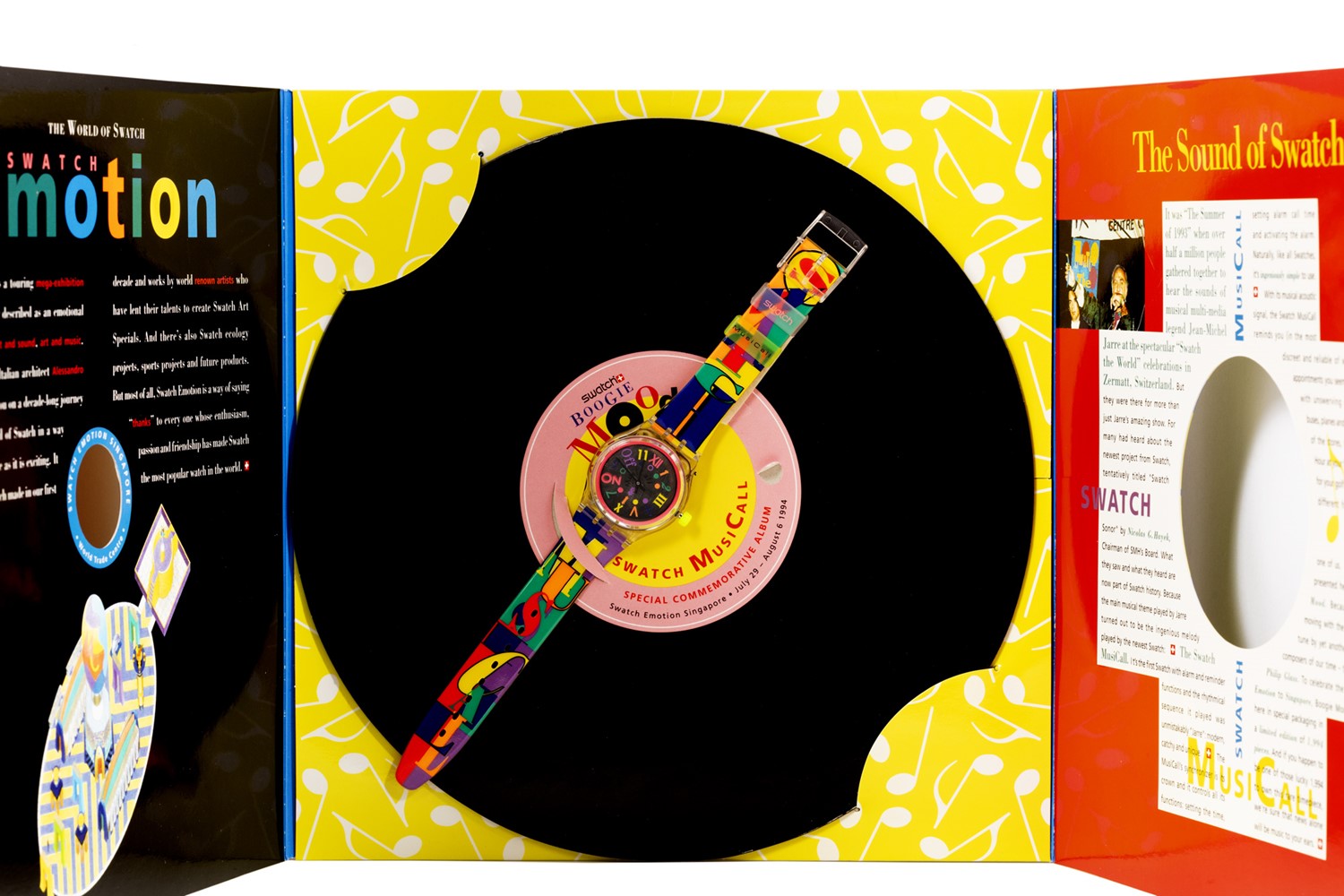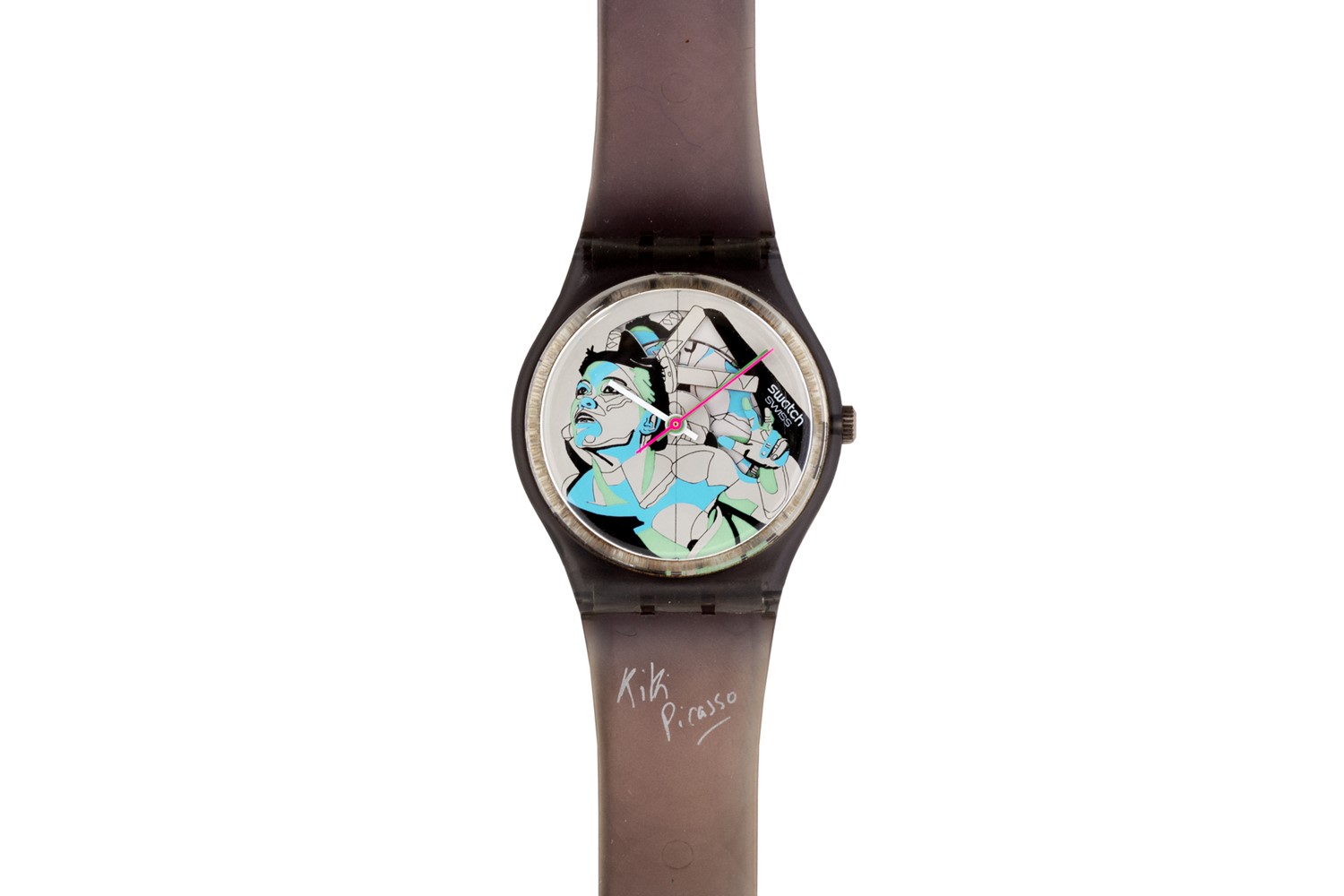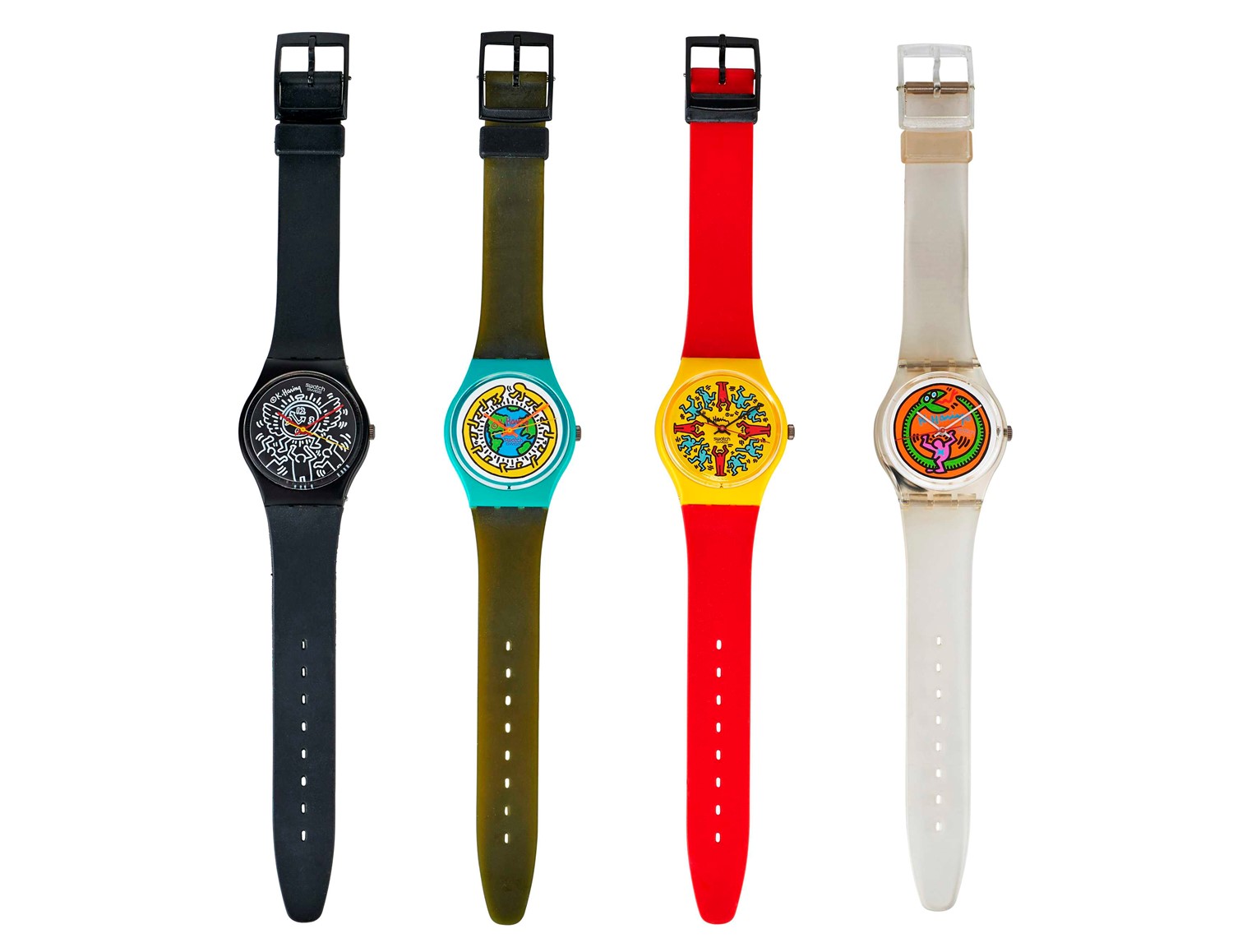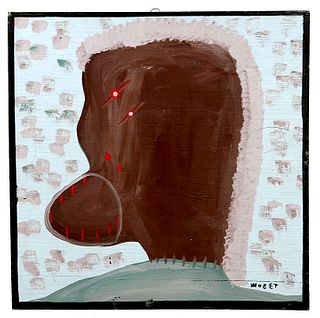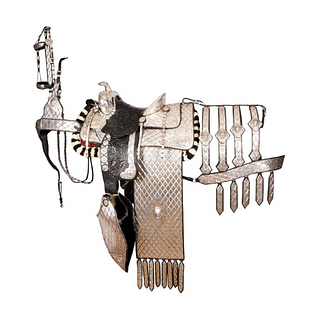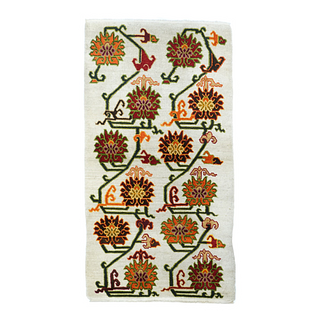The Swatch Collection: The Second Watch, A Garment That Dressed A Million People’s Wrists
Behind every great success story, there are a challenge and a bet, often arising from a crisis.
In the late 1970s, the Swiss watch industry was witnessing a rapid decline caused by the invasion of the Japanese market. The Japanese produced watches with quartz movement, paradoxically of Swiss invention, and were able to overtake 42% of the world market in a few years.
The prototype that anticipated the invention of the Swatch was called Popularius, a spartan name which already clearly indicated the popular destination (pop) of the product: “a low-cost, high-tech, artistic and emotional ‘second watch’ - the Swatch.
The Swiss expensive watch brands (S-watches) destined for the American market came out in November 1982, but the market test did not truly work.
Finarte, 'The Swatch Collection' auction on June 24
In Switzerland, the entire production, 25 watches, was officially launched in March 1983. The watches were then distributed in the United States, England and afterwards in Germany. Nicolas G. Hayek was the brilliant mind behind the project, a genius of marketing, applied engineering and corporate strategy. At the time he was the Chief Executive Officer of Hayek Engineering. In addition to some strategic corporate mergers, Hayek took up the impossible challenge: to create an almost perfect quartz watch at a minimal cost, working with less than half of the components usually necessary (just 51, from the usual 90-151).
Nevertheless, the technical project alone was not enough, and Hayek knew it well. He needed another decisive action. The smart touch was an advanced and imaginative marketing project. “On the one hand, Hayek asked some artist friends to use that black plastic watch (the first Swatch prototypes) and paint it like a canvas; on the other, he turned to the banks to finance a project on which he planned to achieve the breakeven point once the first two million pieces were sold.”
In just over a year, the company reached breakeven: in the fall of 1984, it produced ten million specimens, in 1988, already 50 million. In the autumn of 1992, ten years after the launch of the brand on the market, the production rose to 100 million pieces, reaching 200 million in 1996: an impressive growth, a textbook case history. Hayek declared: “The construction system put in place developed by our engineers led us, in the beginning, to plan a quantity of 5 million watches per year, so much so that we were considered crazy by market operators. Well, the excellent sales results led us to forecast 12 million for the following year. At that point, crushed by the Swatch phenomenon, and in need to review all their strategies, the market operators became the madmen.”
The Swiss watches were initially made of plastic. Over time, constant experimentation introduced new materials, from steel to aluminium, to synthetic fabrics, rubber and silicone. However, it is with the innovative design developments that Swatch reached the pinnacle of experimentation and imagination. “Hayek wanted to understand Swatch, not only as a container of quality and technology, accessible to all but as a way of communicating, a talking piece designed to allow the wearer to show who he was and how he felt.”
Thus, in the four decades of the brand’s life, the company produced iconic and “emotional” models that made the history of modern watchmaking, also seen as a continuous challenge to the art and design’s market.
We can consider Swatches as rightful heirs of the 60s Pop Art, a continuous source of inspiration for artists of at least two generations, becoming themselves artistic material. Painters, sculptors, musicians, directors have experimented with these design objects, from Christian Chapiron with his 1984 Kiki Picasso, to the American painter Keith Haring. The latter created a whole series of prototypes in the mid-eighties and four Swatches with its designs, including the Mille Pattes (1986), produced and launched in the United States. Since then, there have been many creative collaborations, among the most significant: Alfred Hofkunst, Jean-Michel Folon, Sam Francis, Mimmo Paladino, Mimmo Rotella, Nam June Paik, Not Vital, Akira Kurosawa, Spike Lee, Renzo Piano and Moby. An integral part of each Swatch Art Special Edition is the packaging, often as fun and original as the watches themselves.
The collection presented here contains 1241 lots from the production’s start (1983) until the end of 1996. Fourteen years of Swatch watches, all in their original packaging, never used. Probably the most famous Italian collection in private hands, many of of the lots have their guarantee certificates within the package, with its production and market numbering.
Overall, the “Art” Specials stand out for their rarity and preciousness.
The Kiki Picasso with its five colours is specimen No. 82/120. Work of the painter / graphic artist Christian Chapiron, the first artist to sign a Swatch. The strap bears his signature, the case, without numbers and codes on the back, is the initial one from 1983. During the IRCAM’s reception in Paris (Center National des Arts et de la Culture) at the Pompidou centre, the 120 watches were distributed to some eminent guests.
The 1985 Davos Symposium (made in only 200 copies) was given to the participating economists who gathered for the annual Forum, including Henry Kissinger. This copy is the first edition with the text on the dial.
Andrew Logan’s unobtainable Jelly Fish was released in London on May 31st 1985 in only 50 copies and was intended to reward the winners of the Alternative Miss World, sponsored that year by Swatch. The brooch-sculpture signed by Logan featured a fish-like construct with precious stones, glitter and pearls on the strap. On the back, next to the safety pin, Logan engraved his name and the acronym A.M.W. (Alternative Miss World).
The Oigol Oro, 1985, is the work of Mimmo Paladino, kept here in the original matte black box with warranty and certificate of authenticity. The specimen is part of the first of two series, with Arabic numbering, limited to 100 samples. The one at auction is number 27/100, intended – according to the documentation kept by the parent company - for the singer Madonna on the occasion of the V.I.P. party at the Martini terrace in Milan.
The four watches signed by Keith Haring, dated 1985-86, have a circulation of 9,999 copies and are among the most sought-after and rare on the market: the complete series was sold in 1991 by Christie’s London for about 12 million Lire.
The Rorrim 5 by Tadanori Yokoo is also extremely rare, made in 1987 in only 5000 copies. It was initially distributed only in Japan and later arrived in the European market as well. It has quotes of more than € 2000.
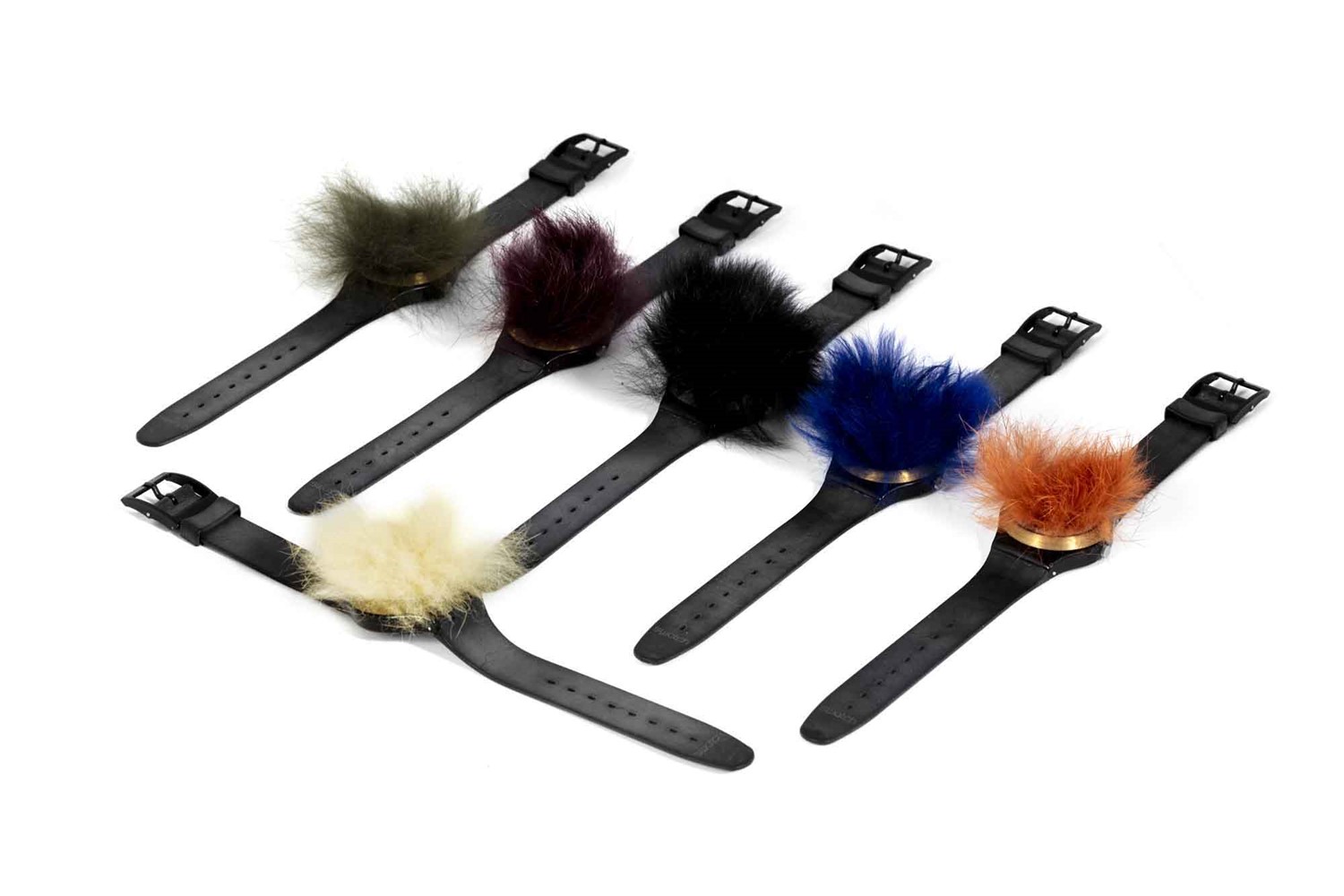
Also fascinating is the story of the 6 Black Puff intended for the American market (1988). The name of the collection, “Blow your time away”, recalls the peculiar characteristic of these watches: the presence of a tangle of angora hair (puff) in six different colours attached to a brass ring on the glass. We can translate the term “puff” with the term breath. The idea is to blow time away, and the angora hair is an invitation to get rid of the slavery of the hands. To read the time, you have to blow the hair off the clock face.
From the first Swatch released in the spring of 1983, GB101 code, to the latest Swatch X 007 series dedicated to James Bond and his undying movies (released in February 2020), these iconic objects useful for measuring time have always represented something more. The evolution of taste, the passions of at least two generations of loving collectors, the sudden transformations of objects that in measuring time also give us the measure of how long and how much we have changed since they first appeared on the market. Furthermore, this extraordinary collection - which condenses and fully represents the first 14 years of Swatch - is the living and vital testimony of how fashionable and straightforward watches can describe, with their multifarious facets, the history of an entire society.
Browse the full catalog and register to bid live in Finarte's upcoming 'The Swatch Collection' sale on June 24th, here, on Bidsquare.
- Rafael Osona Auctions' Modern & 19th Century Design From Nantucket Estates
- Bidsquare Appoints Traci Lombardo as CEO, Reinforcing Founding Commitment to Auctioneers
- Quilts as a 2025 Design Trend: A Celebration of American Heritage and Craftsmanship
- A Celebration of Sports History and Collectibles
- The Thrill of Sports Memorabilia Auctions: A Collector’s Paradise
- Demystifying Coin Condition: A Guide to the Sheldon Grading Scale
- Snoopy & Friends: A “Peanuts” Auction at Revere
- Colorful Chinese Monochromes at Millea Bros
- 12 Holiday Gifts for the “Impossible to Buy For” on Bidsquare
- Alluring Art Objects and Accessories from the Estate of Chara Schreyer



 EUR
EUR CAD
CAD AUD
AUD GBP
GBP MXN
MXN HKD
HKD CNY
CNY MYR
MYR SEK
SEK SGD
SGD CHF
CHF THB
THB